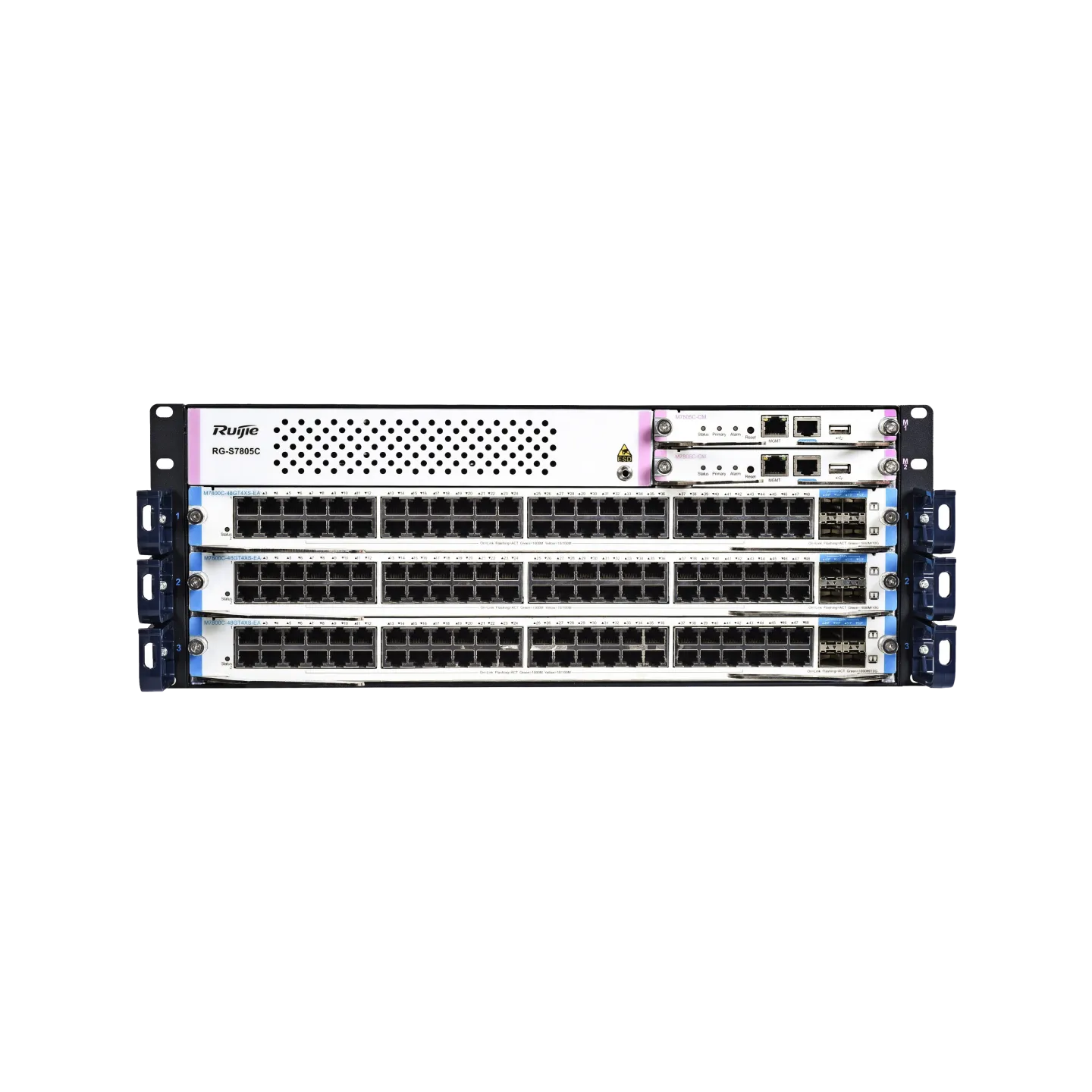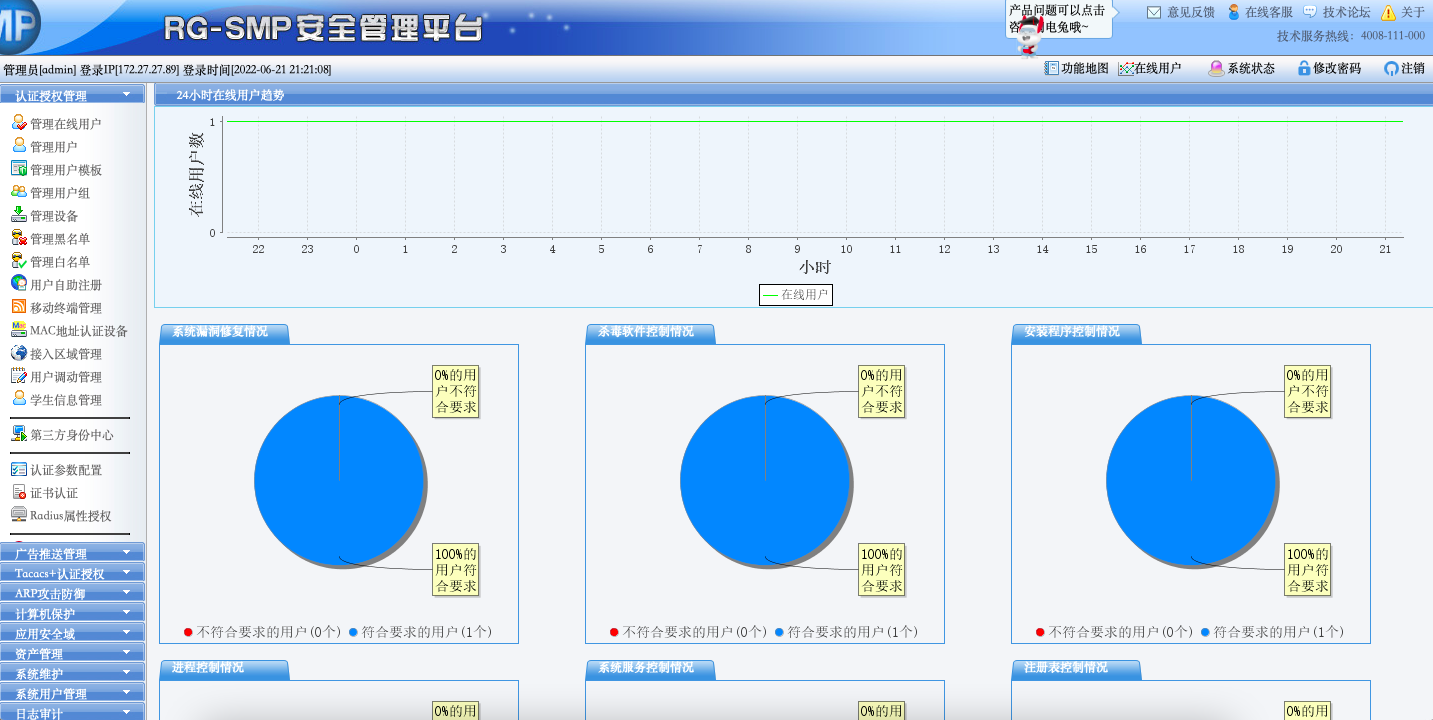功能介绍
GRE(Generic Routing Encapsulation,通用路由封装)协议是对某些网络层协议(如IP 和IPX)的数据报文进行封装,使这些被封装的数据报文能够在另一个网络层协议(如IP)中传输。GRE采用了Tunnel(隧道)技术,是VPN(Virtual Private Network)的第三层隧道协议。
Tunnel 是一个虚拟的点对点的连接,提供了一条通路使封装的数据报文能够在这个通路上传输,并且在一个Tunnel 的两端分别对数据报进行封装及解封装。
应用场景
若总公司和分公司各自的内网之间要能够互相共享资料,并且对数据的安全性要求不高,此时您可以在总公司和分公司的网络设备上建立GRE VPN,它即能实现总公司和分公司之间能够直接互相访问资源。
一、组网需求
两个局域网分别通过出口路由器访问internet,同时要求这两台出口路由器使用GRE隧道实现两个局域网用户间的互访。
二、组网拓扑

三、配置要点
1、配置路由器R1和R2,使R1和R2能够正常访问互联网,并互相能够ping通。
2、在R1配置GRE隧道
3、在R1配置路由,将局域网2网段路由指向GRE隧道
4、在R2配置GRE隧道
5、在R2配置路由,将局域网1网段路由指向GRE隧道
注意:内网1和内网2需要互访的IP网段不能重叠
四、配置步骤
1、配置路由器R1和R2,使R1和R2能够正常访问互联网,并互相能够ping通。
R1:
interface Fastethernet 0/0
ip ref
ip address 222.100.100.1 255.255.255.252
ip route 0.0.0.0 0.0.0.0 222.100.100.2
R2:
interface Fastethernet 0/0
ip ref
ip address 222.200.200.1 255.255.255.252
ip route 0.0.0.0 0.0.0.0 222.200.200.2
2、在R1上配置GRE隧道
Ruijie>enable //进入特权模式
Ruijie#configure terminal //进入全局配置模式
Ruijie(config)#interface tunnel 1
Ruijie(config-if-Tunnel 1)# ip address 172.16.100.1 255.255.255.0 //配置GRE隧道地址
Ruijie(config-if-Tunnel 1)#tunnel source 222.100.100.1 //配置GRE隧道源IP(路由器R1的外接口IP)
Ruijie(config-if-Tunnel 1)#tunnel destination 222.200.200.1 //配置GRE隧道目的IP(路由器R2的外接口IP)
Ruijie(config-if-Tunnel 1)#exit
3、在R1配置路由,将局域网2网段路由指向GRE隧道
Ruijie(config)#ip route 192.168.2.0 255.255.255.0 Tunnel 1 172.16.100.2
//访问192.168.2.0/24的地址,从tunnel 1出去,转发给 172.16.100.2(对端GRE隧道地址)
4、在R2上配置GRE隧道
Ruijie>enable //进入特权模式
Ruijie#configure terminal //进入全局配置模式
Ruijie(config)#interface tunnel 1
Ruijie(config-if-Tunnel 1)# ip address 172.16.100.2 255.255.255.0 //配置GRE隧道地址
Ruijie(config-if-Tunnel 1)#tunnel source 222.200.200.1 //配置GRE隧道源IP(路由器R2的外接口IP)
Ruijie(config-if-Tunnel 1)#tunnel destination 222.100.100.1 //配置GRE隧道目的IP(路由器R1的外接口IP)
5、在R2配置路由,将局域网1网段路由指向GRE隧道
Ruijie(config)#ip route 192.168.1.0 255.255.255.0 Tunnel 1 172.16.100.1 //访问192.168.1.0/24的地址,从tunnel 1出去,转发给 172.16.100.1(对端VPN隧道地址)
五、配置验证
1、在内网1的电脑上ping内网2的地址。
C:\Users\Administrator>ping 192.168.2.1
正在 Ping 192.168.2.1 具有 32 字节的数据:
来自 192.168.2.1 的回复: 字节=32 时间=2ms TTL=248
来自 192.168.2.1 的回复: 字节=32 时间=1ms TTL=248
来自 192.168.2.1 的回复: 字节=32 时间=1ms TTL=248
来自 192.168.2.1 的回复: 字节=32 时间=2ms TTL=248
192.168.2.1 的 Ping 统计信息:
数据包: 已发送 = 4,已接收 = 4,丢失 = 0 (0% 丢失),
往返行程的估计时间(以毫秒为单位):
最短 = 1ms,最长 = 2ms,平均 = 1ms
2、在路由器上查看GRE隧道状态
Ruijie#show interfaces tunnel 1
Index(dec):11 (hex):b
Tunnel 1 is UP , line protocol is UP
Hardware is Tunnel
Interface address is: 172.16.100.2/24
MTU 1480 bytes, BW 9 Kbit
Encapsulation protocol is Tunnel, loopback not set
Keepalive interval is no set
Carrier delay is 0 sec
RXload is 1 ,Txload is 1
Tunnel source 222.200.200.1 (FastEthernet 0/0), destination 222.100.100.1
Tunnel TTL 255
Tunnel protocol/transport IPIP
Queueing strategy: FIFO
Output queue 0/40, 0 drops;
Input queue 0/75, 0 drops
5 minutes input rate 0 bits/sec, 0 packets/sec
5 minutes output rate 0 bits/sec, 0 packets/sec
5 packets input, 500 bytes, 0 no buffer, 0 dropped //有数据包从GRE隧道进入
Received 0 broadcasts, 0 runts, 0 giants
0 input errors, 0 CRC, 0 frame, 0 overrun, 0 abort
5 packets output, 600 bytes, 0 underruns , 0 dropped //有数据包从GRE隧道出去
0 output errors, 0 collisions, 0 interface resets















































